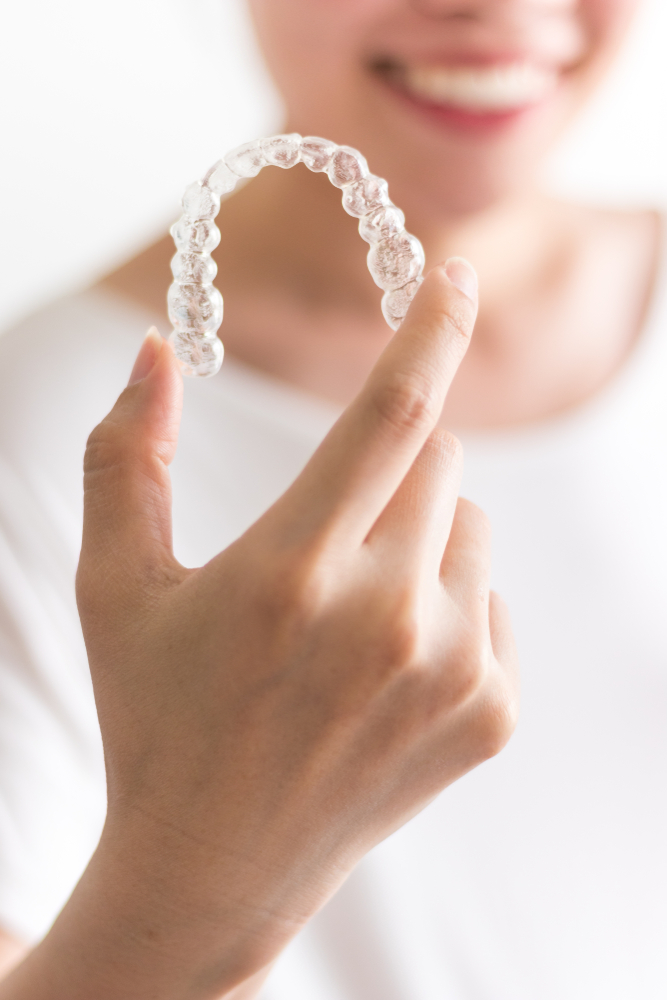
Orthodontic treatment is recommended for patients who have been diagnosed with misalignment problems affecting their teeth and jaw. This can manifest in a number of different ways. Their teeth could be overlapping, twisted or gapped, or their teeth could fail to come together properly when they close their jaw. In either instance, orthodontic treatment will provide the solution.
Modern orthodontic treatment takes a number of different forms. Two of the most common and popular are traditional braces and a newer, different technique called Invisalign. Both are highly successful at moving the teeth and jaw into a new and improved position so that the patient is less likely to experience dental problems such as decay, gum disease, uneven tooth wear, and temporomandibular joint disorder. So, how do you know which to choose? Here are some of the key things you need to know when comparing the two solutions to help you decide which is the perfect option for you.
Traditional Braces
Traditional braces are the most well-known of all orthodontic solutions. They comprise of metal or potentially acrylic (tooth-colored) brackets that are attached to each individual tooth, with a metal or clear wire passing through them. This wire is then tightened in order to move the teeth into their new position. Although acrylic braces are more discreet, they aren’t completely invisible.
When you have braces, you will be asked to attend regular appointments so that your orthodontist can monitor the progression of your treatment and make the necessary adjustments to your braces so that your teeth continue to move. The entire treatment program usually takes between 12 and 24 months depending on the severity of your orthodontic issues and how well your teeth respond to treatment.
One thing to be aware of is that braces are permanent and can only be removed by your orthodontist. They are also fragile, and patients need to take extra care not to damage them, which can occur when you eat the wrong foods or aren’t careful when you brush your teeth. Some of the main considerations that patients who choose braces need to make include the following:
- You will need to strictly adhere to the advice given to you by your orthodontist regarding what you can eat and what foods should be avoided.
- You will need to take additional time and care when brushing your teeth, using special equipment such as interdental brushes to help ensure that your teeth are as clean as they can be.
- Failure to properly clean your teeth can lead to dark spots developing on your teeth, decay and gum disease. Gum disease could cause your treatment to be ceased.
- You may not be able to play contact sports whilst undergoing treatment as trauma to the face or head could cause damage to your mouth, teeth, and brace.
- You can expect to need to attend appointments every 8-12 weeks for brace adjustments.
Invisalign
Invisalign works in much the time way as conventional braces do, applying gentle and consistent pressure to the teeth and jaw in order to get them to move in the desired way. However, the approach is very different. Instead of using brackets and wires to prompt the movement of the teeth, instead, the patient wears clear aligners over the top of teeth that provide the gentle and persistent force needed to move teeth. The aligners are provided in a series that must be worn in order as each aligner, which is worn for approximately three weeks, represents a specific stage in the process. Once each stage is complete, you simply move on to the next aligner in the series.
Invisalign aligners are designed and manufactured using cutting edge CAD-CAM technology helping to ensure the perfect fit. The Invisalign technology determines the exact path that teeth need to take to move them into their new position and converts this into the stages of treatment. The aligners are usually provided in a complete set. Each aligner needs to be worn for at least 22 hours each day for the treatment to work to the planned timeline.
There are a number of advantages to choosing Invisalign for your orthodontic treatment, including the following:
- The aligners are more discreet than braces
- Invisalign aligners are more comfortable for patients to wear, with no sharp edges or uncomfortable bits of metal interfering with the way you use your mouth
- Invisalign aligners can be removed for eating, meaning you don’t have to worry about choosing specific foods and instead you can eat what you enjoy
- They can also be removed for cleaning your teeth, which is much easier when there aren’t brackets and wires to worry about
- Your Invisalign aligners can be cleaned using just a toothbrush and toothpaste
- Invisalign is suitable for people who do contact sports since the risk of injury/damage to your aligner is minimal
- Fewer appointments are needed to monitor your progress since there are no professional adjustments
The only real consideration that patients who choose Invisalign have to make is that they have to be fully responsible for wearing their aligners for the necessary durations as failure to do so will impact on the success of their treatment. Invisalign aligners are also normally more expensive than braces, but patients find that the benefits of the treatment make it a great investment when compared to the disadvantages associated with braces.
For more information about either of these orthodontic solutions, please contact Dr. Ramona Sabbaghian and Dr. Anahita Sabaghian today!









